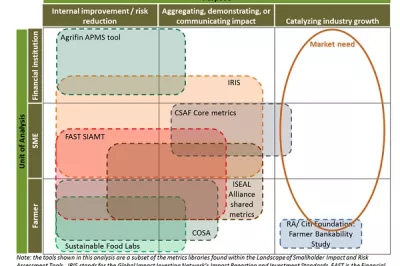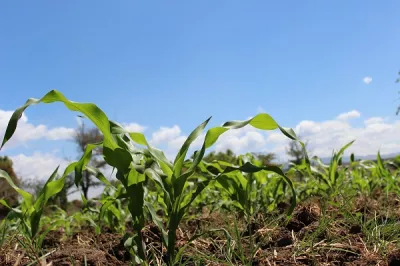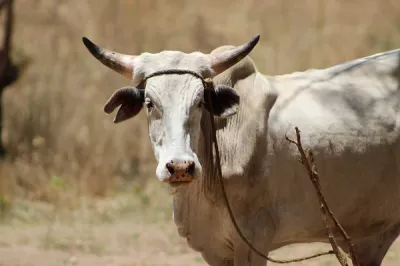Learning from Smallholder Supply Chains in Côte d’Ivoire
If you’re a chocolate lover, this piece of news may worry you: Current trends point to a potential global shortage of the cocoa supply, driven largely by rising consumption of the so-called “food of the gods” in emerging markets. While consumers may expect to pay a bit more for their piece of indulgence, what does that mean for those at the other end of the supply chain?
Unlike large, industrialized crops, cocoa is grown by small, family-run farms in developing countries. These are usually small plots, averaging 2-4 hectares (5-10 acres), where cocoa is grown and harvested using manual labor. Africa represents 68% of global cocoa production, and Côte d’Ivoire alone contributes to around 35% of its global supply. In this part of the world, productivity is typically sub-optimal, with low-yielding, older trees. An aging farmer population and lack of access to agricultural inputs contributes to the problem. This translates into low incomes for smallholder farmers and their families.

One way to address this situation is to assist farmers in improving productivity, by teaching them improved agricultural techniques such as grafting and optimal fertilizer use, and helping them obtain internationally recognized certification standards, enabling premium prices for their crops.
As part of that effort, IFC worked with Ecom, a global commodity trading company that sources directly from 15,000 smallholder farmers in Côte d’Ivoire. In addition to buying cocoa from the farmers, Ecom provides training and extension services to farmers. In order to increase productivity, enhance supplier loyalty, and improve the efficiency of its operations, Ecom has also been working to better understand its supplier base.
For Ecom, its training and certification efforts represent a significant commitment of financial and human resources. This outreach process is an important for understanding how to allocate its limited resources more efficiently. Identifying high-potential farmers (those who are most likely to graduate to a more commercially-driven farming operation) and enhancing loyalty in the supply chain so the investment generates returns to the company in the form of contracts being honored and crops delivered are two important components. Farmers benefit from access to a reliable buyer, increased prices through better crop quality, yields and certification premiums, and overall improvements in their farming skills.
As part of these efforts, IFC and Ecom interviewed more than 2,000 farmers in the Upper and Lower Sassandra regions of Côte d’Ivoire between July and September 2013. Ecom can use lessons from these interviews to improve its operations and service delivery. The survey covered several areas of interest, including farmer income levels, community needs, food security, allocation of land across crops, and the perceived and actual benefits of the training received. The survey also looked at important qualitative aspects of farmers’ lives, from their motivations and outlook on farming for future generations, to the levels of satisfaction in their relationship with buyers.
The main findings of the survey point to some key challenges facing cocoa smallholder farmers in Côte d’Ivoire.
- High levels of extreme poverty. 37% of households live on less than $1.25 per capita per day, and 80% on less than $2.50 a day.
- Lack of access to basic water and sanitation services. 74% have no access to running water, 30% lack adequate sanitation facilities, and 70% use pit latrines.
- Food insecurity. Needs are especially acute between harvests, with 65–70% of farmers lacking enough resources for food in July and August.

- Aging farmer population. The average age is 45, and 60% are over 40 (life expectancy is 55 years).
- Younger generation doesn’t want to live as farmers. The younger and more educated segments of the farmer population are not enthusiastic about farming as a livelihood opportunity. Lower levels of land ownership in this segment also contribute to less farm investment and lower performance vis-à-vis older farmers.
- More than 60% of farmers stated that they would seek alternative sources of income if they could. A similar share said that they would prefer that their children find an alternative livelihood (see Figure 2). Farmers’ negative perception of agriculture as a livelihood suggests potential risks to the long-term stability of the cocoa supply. The negative perception of farming appears to be more pronounced among the younger and better educated survey participants, which Ecom would consider when designing an outreach strategy for younger farmers.

- Certified farmers are doing better than non-certified farmers. On a more positive note, certified farmers’ yields are 61% higher on average than non-certified farmers’ yields (see Figure 3). Certified farmers are more satisfied with their relationships with cooperatives or traders (with 69% reporting high satisfaction, compared with 36% of noncertified farmers) and they allocate a greater share of their land to cocoa and other cash crops (73%) than non-certified farmers (63%). Farmer retention in certification programs is key to ensuring returns on investment; the best results were observed after three years in a program. These points seem to indicate that the strategy of supporting certification efforts by smallholders is paying off in terms of productivity improvements and overall farmer satisfaction.

- Access to finance emerged as a key service gap, with 62% of farmers in these areas reporting that they received no financing and view it among their greatest needs. Only half of farmers interviewed reported having any type of savings and only a third reported borrowing, mostly from family, friends, or their cooperatives.
- Mobile banking could expand access to financial services. About 88% of farmers own a mobile phone, and 74% use money transfer services for remittances. In addition, 42% of farmers have used a mobile wallet service at least once, 29% are registered users, and 7% are already saving in their mobile wallet, which suggests an opportunity to expand the use of mobile financial services.
The findings are being used by Ecom to better tailor the company’s service offerings and address strategic concerns. They have also informed the key messages that Ecom conveys to partners—including buyers, Non-Governmental Organizations, and other technical assistance partners—around food security, community needs, and the benefits of certification. And the work has helped it recognize the importance of improving data quality and management and implement better ways to collect accurate, real-time data.
So, next time you take a bite on that nice piece of chocolate, remember how much work has gone into it, and the huge contribution of smallholder farmers to the enjoyment of this beloved global commodity.




Add new comment